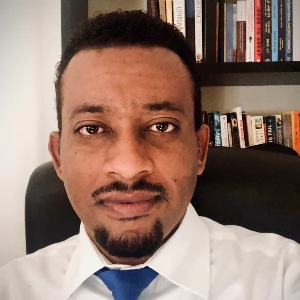 Poverty Increase has been a fallout of the Hidden Debt crisis in Mozambique.
Poverty Increase has been a fallout of the Hidden Debt crisis in Mozambique.
In 2016, the discovery of previously undisclosed debts upended Mozambique’s development trajectory. Mozambique was one of the world’s 10 fastest-growing economies for two decades. It was a darling of donors and a destination for 10–15 percent of total foreign direct investment (FDI) inflows into Sub-Saharan Africa.
What happened?
Its momentum came to a halt following the revelation of several state-backed “hidden loans,” guaranteed without parliamentary approval. In 2013 and 2014, a clique of government officials created three state-owned enterprises (SOEs) that took on more than $2bn of debt, equivalent to around 12% of gross domestic product (GDP). Allegedly, the funds were to build shipyards, develop tuna fishing, and police the coast—with financing arranged by Credit Suisse, VTB, and BNP Paribas, three major banks. Some $1.3bn of it was undisclosed until the international media reported on them in 2016. These loans breached the International Monetary Fund (IMF) program in place at the time, and the International Development Association’s non-concessional borrowing policy, resulting in the outright suspension of budget support by both institutions and other development partners.
The “hidden debts” episode exposed the country’s governance weaknesses at the time. In 2017, Mozambique concluded an independent audit of the “hidden” loans, documenting the lack of due process under Mozambican law. Subsequently, Mozambique’s Attorney-General started proceedings against several Mozambican officials allegedly involved in contracting the loans, and the British financial supervisor pressed charges against the lending financial institutions. Several trials are underway in different jurisdictions. When the loans were contracted, the regulatory framework for state guarantees only required that guarantees remain within the yearly limit; the law was silent on who should approve publicly guaranteed debt.
What was the impact?
The “hidden” loans crisis plunged Mozambique into a protracted economic downturn. Growth halved from 7.7% in 2000–2016 to 3.3% in 2016–2019. The metical depreciated drastically, inflation surged to 17.4% by the end of 2016, and fiscal space narrowed markedly. FDI dried up as international investors lost confidence. Concessional lending from international financial institutions was far more limited, with official aid falling from 17.5 to 12.4% of GDP between 2013 and 2018.
As the hidden liabilities came to light, Mozambique’s external public and publicly guaranteed debt ballooned from 61% of GDP in 2016 to 104% in 2018. The debt service burden due in any given year was too high for the economy to carry, with Mozambique defaulting on its debt in 2016. As a result, credit rating agencies downgraded the sovereign to selective or restricted default, and the World Bank and the IMF re-classified Mozambique’s external debt to “in distress.”
How did the World Bank respond?
Following the suspension of development policy financing (DPF), the Bank pivoted its portfolio towards technical assistance to help address the governance weaknesses that led to the crisis. The Gestão Económica para Desenvolvimento Inclusivo (GEDI) technical assistance (TA) program has been providing support on debt management and transparency, fiscal risks (including credit risks from SOEs), and public investment management. In the absence of DPF and Fund program, the TA program provided an entry point for much-need policy dialogue with the authorities and helped anchor domestic reform efforts. In addition to capacity building and analytical support, the program was instrumental in addressing major legislative and regulatory loopholes that paved the way for the egregious misappropriation of public funds.
With World Bank support through the GEDI program, the authorities have taken a series of critical policy and institutional measures:
- Tightening checks and balances on guarantees and resuming transparent debt reports: The Government of Mozambique (GoM) adopted new regulations in 2017 to strengthen debt and guarantees management and transparency. Besides, it improved SOE governance in 2018 through a new law enhancing oversight and corporate governance. The authorities tightened control over SOE borrowing by requiring a more stringent approval process. Leveraged by IDA’s Sustainable Development Finance Policy (SDFP), they resumed the publication of debt reports in 2019, broadening the coverage to SOEs.
- Introducing fiscal risks statements, including credit risks from SOEs: With GEDI support, the GoM has been producing fiscal risk statements since 2019, an essential step towards containing risks from SOEs. It also recently approved a credit risk assessment framework for guarantees and on-lending to SOEs. Also underpinned by the SDFP, the authorities used these methodologies to prepare credit risk reports for seven major SOEs.
- Establishing a public investment management (PIM) system and regulatory framework: Mozambique adopted a regulatory framework for PIM in 2020. The regulations require that all public investment projects are pre-appraised for socio-economic returns before being financed and take disaster resilience into account. From the outset, this reform was supported by GEDI, helping the authorities develop methodologies, training public officials in their use, and developing IT systems for project appraisals.
These reforms led to the adoption of a revised overarching public financial management (PFM) Law in 2020, integrating the SOE sector and decentralized bodies into the budget system for the first time.
What have we learned?
- Strengthening debt recording and transparency is a gradual process: Despite the authorities now covering the central government and SOEs in debt reports, central government debt data is not recorded in one place, and SOE debt is not centralized at the finance ministry. Ongoing support prioritizes migrating to the new Commonwealth Secretariat system, bringing public sector-wide debt recording and reporting in one place.
- Deeper SOE reforms are essential. Several public enterprises continue to suffer from financial and operational underperformance. Despite the legal reforms, SOE oversight is fragmented. Public service obligations (quasi-fiscal operations) undermine SOE performance. Some of these gaps are being addressed through ongoing World Bank DPOs and projects.
- Calibrating iterations is vital. Structural reforms are iterative processes, with each round providing greater understanding and buy-in from the authorities. The trajectory of the above-mentioned reforms speaks to the need to begin small, testing innovations through TA before enshrining them in legislation.
- Ownership is critical. In the wake of the hidden debt crisis, fully cognizant of the governance weaknesses at the time, the authorities have been in the driver’s seat of reforms, from conception to implementation. The TA program has been fully embedded within the finance ministry and has been instrumental in leveraging the country’s own reform initiatives and nudging them in the right direction.
- Timing is of the essence. The crisis that ensued from the “hidden debt” scandal provided an excellent opportunity to undertake reforms. Periods of economic downturns often pave the way to implement difficult reforms by making people rally around them or weakening opposing interest groups.
The authors would like to acknowledge the contributions of Shireen Mahdi, Fernanda Massarongo, and Anna Carlotta Allen Massingue to the design and implementation of the Technical Assistance program.



Join the Conversation